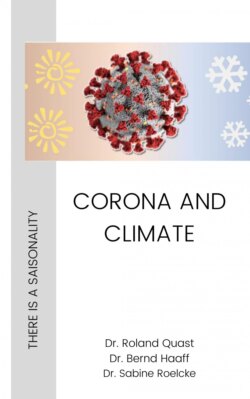Читать книгу CORONA AND CLIMATE - Dr. Roland Quast - Страница 9
На сайте Литреса книга снята с продажи.
ОглавлениеCORONA IN THE MOUNTAINS
FACT
Temperature decreases with altitude, in dry air more than in clouds.
Up to the end of the troposphere at an altitude of about 11 km, the temperature decreases evenly in a linear fashion, always assuming that the weather is stable weather situation.
Basics:
per 100 meters, the temperature decreases by about 1°C in dry air. When this air mass condenses during the ascent due to cooling energy is released.
This process lowers the cooling rate of rising air per 100 m to approx. 0.7 °C. In the process, the air becomes dryer.
Temperature and Pressure Rates
In addition an analysis of the meteorologically and geographically given conditions: Different sea levels should be seen epidemiologically differently. Temperature, humidity and UV radiation are different at different altitudes.
Another point that can influence the spread of the virus is the air flow.
In strong air currents (westerly wind, easterly wind), the virus is transported by the wind in an aerosol with a lifespan of up to four days.
Air currents can also lead to a deviation of the congruence of the Corona infection map with the geographic relief map, depending on the wind direction, air currents cantilever over the mountains and transport viruses in aerosols.
